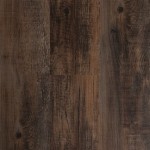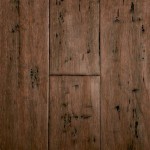Essential Aspects of Flooring Transition Strips
Flooring transition strips, also known as T-moldings or reducer strips, play a crucial role in creating a seamless and visually appealing transition between different types of flooring surfaces. Whether you're connecting hardwood to carpet, tile to laminate, or any other combination, transition strips serve a variety of essential functions.
Functions of Flooring Transition Strips
Smooth Transition: Transition strips bridge the gap between uneven flooring surfaces, providing a smooth and consistent transition for foot traffic and furniture movement. They prevent tripping hazards and ensure a level walking surface.
Protecting Flooring Edges: The exposed edges of flooring surfaces are vulnerable to chipping, scratching, or moisture damage. Transition strips protect these edges from wear and tear, preserving the integrity and lifespan of your floors.
Hiding Expansion Gaps: Flooring materials naturally expand and contract with changes in temperature and humidity. Transition strips are designed to conceal these expansion gaps, preventing unsightly seams and potential damage to the flooring.
Aesthetic Appeal: In addition to their practical benefits, transition strips also enhance the aesthetic appeal of your floors. They come in a variety of materials, finishes, and colors, allowing you to match or complement your existing flooring.
Types of Flooring Transition Strips
Transition strips are available in a wide range of types and materials to accommodate different flooring combinations. Some common types include:
- T-Moldings: Used for transitions between flooring of equal heights, such as hardwood to carpet
- Reducer Strips: Used for transitions between flooring of different heights, such as tile to laminate
- End Caps: Used to finish the ends of transition strips
- Stair Nosing: Used to provide a safe and secure transition on stairs and steps
Choosing the Right Transition Strip
Selecting the appropriate transition strip depends on the type of flooring you're connecting, the height difference, and your desired aesthetic. Consider the following factors:
- Material: Transition strips come in materials such as aluminum, brass, vinyl, and wood. Choose a material that complements your flooring and withstands wear and tear.
- Finish: Transition strips are available in various finishes, including brushed, polished, anodized, and painted. Select a finish that matches the style and color of your floors.
- Size: Ensure the transition strip is wide enough to cover the expansion gap and the exposed flooring edges.
- Installation: Transition strips can be installed using nails, screws, or adhesive. Choose an installation method appropriate for your flooring and skill level.
Conclusion
Flooring transition strips are essential elements for creating a functional, attractive, and durable flooring system. By carefully selecting and installing the right transition strips, you can ensure a smooth, secure, and aesthetically pleasing transition between your different flooring surfaces.

A Complete Guide To Flooring Transition Strips

Floor Transition Strips Uneven High Quality Flooring Trims You Ll Love

Flooring Transition Strips Moldings Trims Onflooring

Everything You Should Know About Floor Transition Strips For Your Next Project Carpet To Tile

How To Install Transition Strips In Doorways

Floor Carpet Tile Transition Strips Flooring Tools Direct

Newage S Flooring T Molding Transition Strip 46 In Gray Oak 12031 Rona

Types Of Flooring Transitions And Trim Ll

Trimmaster Satin Silver 5 5mm X 84 In Aluminum T Mold Floor Transition Strip Hlvt16ma84 The Home Depot

Uncover How To Use Luxury Vinyl Plank Transition Strips








